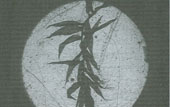Vol. 7: Illuminating Instruments
This seventh volume in the Artefacts series, which began in 1999, deals with the artefacts most closely identified with science museums and, indeed, science, namely scientific instruments. It has its origins in an Artefacts meeting held in October 2004 at the University Museum in Utrecht titled "Scientific Instruments as Artefacts: Shiny Objects and Black Boxes," which was cosponsored, like all previous Artefacts conferences, by the Deutsches Museum, Science Museum, and Smithsonian Institution and organized by one of the editors of this volume (Klaus Staubermann) who was then a curator at the University Museum. Most of the papers were originally presented at this meeting, one (by Peter Morris) was originally presented at an earlier Artefacts meeting about the environment held in Munich in 2000, and two others (by Deborah Jean Warner and Sean Johnston) were specially commissioned for this volume.
The definition of a scientific instrument has been a matter of some debate in recent years. Deborah Warner has shown how in the nineteenth century instruments became "scientific." Before that, they would have been either "mathematical" or "philosophical" instruments, depending on the ways they were employed. In the early twenty-first century scientific instruments are considered as "research technology." Regardless of how one defines a scientific instrument, and we have taken a pragmatic view in this volume, they illuminate many things. Of course some scientific instruments, including two in this volume--the solar microscope and the magic lantern--provide illumination in a direct sense but all scientific instruments shed light on scientific phenomena. Furthermore, they are the product of local skills and practices, upon which this volume also sheds light. But the illuminating role of scientific instruments goes much further than that. We would argue that they can be sensitive probes for revealing the scientific, social, and cultural environment of the instrument even after it has ceased to be used actively as an instrument, which the chapters in this volume demonstrate. The volume shows how scientific instruments are an excellent probe for local culture and cultural contexts. Klaus Staubermann, in his reworking of demonstration practice, has come to a similar conclusion: instruments are an expression of their local culture as well as rendering this local culture by their very use. Peter Heering's chapter shows how the reconstruction of solar microscopes sheds light on the various uses of these instruments and the nature of scientific dilettantism in the eighteenth century. By contrast Deborah Warner's chapter illuminates the use of instruments for quality control in industry and the search for new ways of testing samples, thus revealing the nature of nineteenth-century industrial analysis. In a later period, Peter Morris's chapter on the analysis of DOT demonstrates how concern about pesticides residues increased in the 1950s well ahead of the publication of Silent Spring in 1962. Fittingly for a series concerned with the study of artifacts in museums, Christian Sichau's chapter explains how an instrument's environment within a museum changed over time. This reflects the arguments made by historians of science--for instance by Christoph Luthy--that the perception of an instrument is highly dependant on the instruments' ability to perform its original functions within the museum.
Crucially, however, scientific instruments are not only directly useful to scientists and a cultural probe for historians of science, but also illuminate the evolution and practice of science to a general public. They reveal the cultural context of science and act as symbols for broader historical developments within the museum. The refractometer can be seen as an example for the development of quality control here, the electron capture detector for the growth of environmental concern, CFCs as well as DOT, and the magic lantern for the changing nature of popular science. It is the task of historians to extract the different meanings of scientific instruments and place them in their broader context, and it is the duty of museum curators to weave these different layers of meaning into compelling stories that will both captivate and inform museum visitors. Sean Johnston's chapter reveals the problems of trying to display a subject, holography, whose historical meaning and popular appeal changes over time, with implications for our understanding of holography's development and the problems of collecting material relating to this protean subject. Jane Wess's chapter on a Science Museum exhibition, "Inside the Atom," illustrates the challenges of presenting the latest historiography of science and scientific instruments to the general public, showing how an expectation of scientific heroes and iconic objects can be carefully diverted toward a broader understanding of scientific developments. Finally, Arne Schirrmacher warns us that any attempt to present scientific instruments to a broader public should be governed by trying to make the artefact itself "visible" rather than content us with simply presenting attractive visualizations. As historians, we hope this volume will encourage more studies of scientific instruments as historical and cultural probes that illuminate both scientific practice and social change. As curators, we seek to promote the analytical study of scientific instruments in museum collections and the creation of new stories, allowing our visitors to draw their own meanings from these objects, which are central to the development of modern science.

